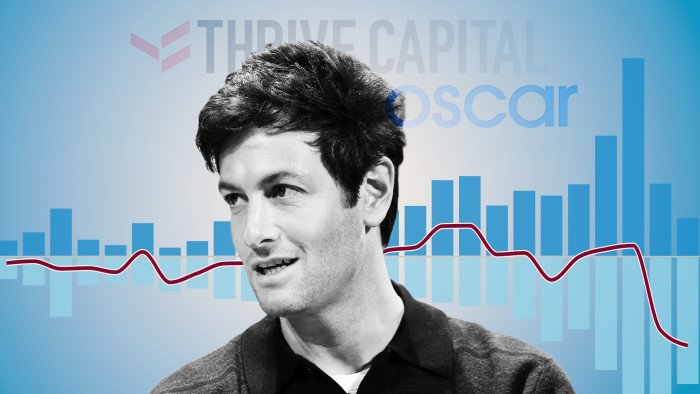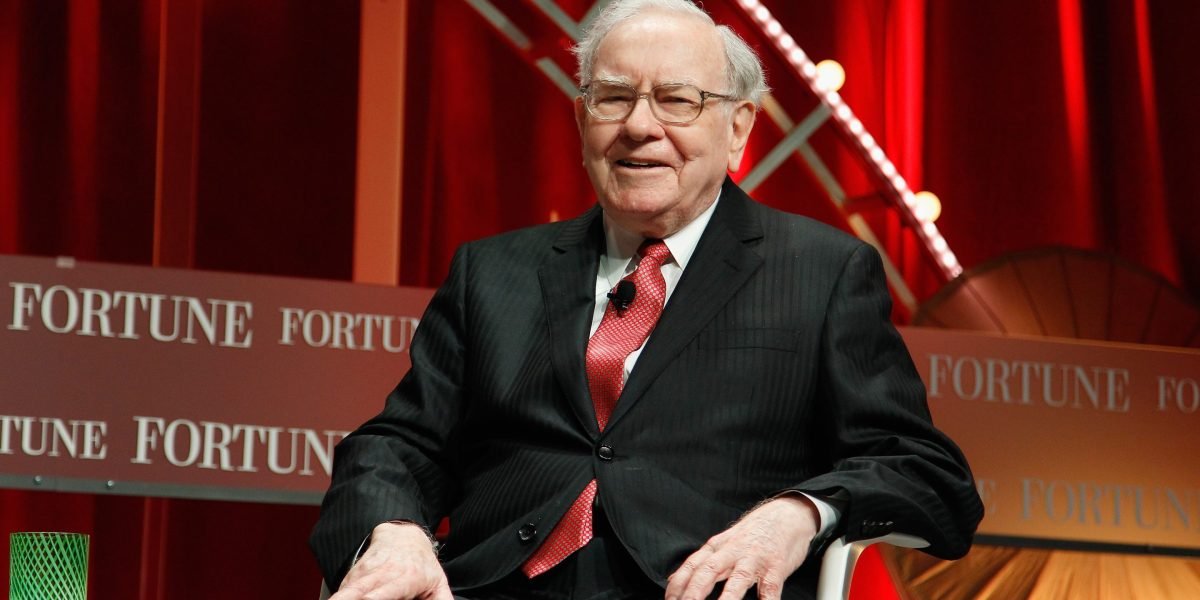As OpenAI raced to raise almost $7bn last month, one investor was always on hand. Thrive Capital stayed close to the AI start-up’s co-founder and chief executive Sam Altman and contributed over $1bn to a funding round that valued the artificial intelligence group at $150bn.
The bet is the boldest yet for the New York-based firm founded by Josh Kushner, adding to the $130mn Thrive invested in OpenAI last year, on top of an undisclosed amount of stock it has bought from employees plus an option to invest a further $1bn by the end of 2025.
It also typifies the approach Kushner has developed since launching Thrive 14 years ago: get close to founders, remain loyal through crises and concentrate funds in a small number of companies.
Betting a billion dollars or more on a behemoth inverts the classic venture model: firms typically write dozens of small cheques in young start-ups; most fail, but the flops are more than offset by a few spectacular successes.
Kushner’s gambit highlights how, as private markets have ballooned over the past decade, venture capital has mutated from a cottage industry into an institutionalised asset class, and a vital engine of America’s economy.
The shift has left VCs with a choice: remain faithful to early-stage investing and hope for outsize returns, or scale up funds to meet increasingly massive private companies.
Thrive is attempting to manage both, writing cheques for multibillion-dollar start-ups its team believe can still multiply 10 or 100-fold in value.
“Ten years ago when we were saying ‘what would the big outcomes be?’ We weren’t talking about trillion-dollar companies,” says Vince Hankes, a partner at Thrive who led the investment in OpenAI. “Now we sit around the table and there’s six [in the US].
“We do think about that area as being an under-exploited opportunity to compound capital for a long time,” he adds.
In interviews with half a dozen Thrive partners, as well as start-up founders backed by them and institutional investors who allocate money to the firm, a picture emerges of a group attempting to meld the clear-eyed financial analysis of an East Coast investor with the wide-eyed optimism of Californian venture firms. They believe start-up valuations will continue rising, and that they can pick the best of them.
Thrive’s rivals, including more established West Coast firms, dismiss the approach as closer to asset management. “We invest in companies, they trade in stocks. It’s like an ETF [exchange traded fund] for venture,” says a partner at one Silicon Valley firm. “But private companies are not stocks. You can’t get out when they start going down.”
Speaking privately to the FT, some institutional investors question whether Thrive’s massive bets can ever deliver “venture-style returns”.
Others say it is too soon to judge a group whose biggest investments have not yet cashed out. Thrive’s biggest portfolio companies, including OpenAI and payments start-up Stripe, have racked up massive paper gains. But until they go public or are acquired, profits won’t be returned to institutional investors in Thrive’s funds.
Kushner’s large, high-conviction investments are taking the firm into uncharted territory, competitors say. “They are trying to prove you can have a $5bn fund and be a boutique,” says the managing partner of another New York venture firm.
“The logic [of VC] says you invest $10mn in a company which can become worth $1bn. [Thrive] argue that can continue at 100 times the scale,” he continues. “Is that possible? Yes. Is it reasonable? No.”
The books piled up in Kushner’s office hint at the inspiration behind his approach.
They include writing by Bridgewater founder Ray Dalio and Disney chief executive Bob Iger alongside collections on the late Berkshire Hathaway vice-chair Charlie Munger, Apple co-founder Steve Jobs and a biography of Nikola Tesla, the electrical engineering pioneer.
In conversations with Kushner and others close to the business, titans of traditional finance are frequently referenced as guiding lights. Kushner previously worked at Goldman Sachs, other partners came from Blackstone and Bridgewater.

Kushner is softly spoken and assiduously modest. Those who know him highlight his determination to keep a low profile away from the glare on his famous family. Kushner’s elder brother Jared is married to president-elect Donald Trump’s daughter, Ivanka. An adviser to Trump’s previous administration, he will not play a role in this one. Josh’s father Charles, who built the family’s multibillion-dollar real estate business, has served time for tax evasion and witness tampering.
Kushner launched Thrive in 2010 when he was a student at Harvard Business School and raised a first fund from institutions in 2011.
That was followed a year later by an investment in Instagram which put Thrive on the map. The firm doubled its money inside a week, when Facebook swooped for Instagram in a $1bn deal.
Kushner also launched health insurance start-up Oscar Health in 2012. The company went public at close to $8bn in 2021, though its market capitalisation is roughly half that today.
Thrive has raised a total of $12.3bn, and now has almost $25bn under management, making it one of the largest VCs in the country. The firm was valued at $5.3bn last year when a consortium of high-profile businessmen including Iger, India’s richest man Mukesh Ambani, KKR co-founder Henry Kravis and French telecoms billionaire Xavier Niel paid $175mn for a 3.3 per cent stake in the business.
It raised a fund of just over $5bn in August, a substantial haul at a time when limited partners (LPs) — the foundations, endowments and pension funds that supply the capital for VCs to invest — are retrenching.
Despite its outsize bets, Thrive itself remains tiny, with just nine investing partners, and discreet. Both Kushner’s competitors and friends describe a meticulous brand-builder whose studied silence has created an air of mystique around the firm.
He is “excessively polite”, says one venture capital executive who has invested alongside Kushner, and “follows through on everything he says”.
The approach is all the more striking in an era where VCs have become larger and noisier.
Investors Chamath Palihapitiya, Jason Calacanis, David Friedberg and David Sacks have built a brand through their popular All In podcast, while Andreessen Horowitz, founded in 2009 by tech entrepreneurs Marc Andreessen and Ben Horowitz, has married multibillion-dollar venture funds with a sophisticated marketing operation and scores of operating partners.
“Venture at scale is not new: Andreessen coined it,” says the New York-based rival. “But Andreessen has become [luxury conglomerate] LVMH while Thrive is trying to prove they can be Chanel.”
In place of a megaphone, the firm has quietly shown intense fealty to founders during moments of crisis, such as during the boardroom coup that briefly ousted OpenAI’s Altman last year.
Kushner was instrumental in returning Altman to the company after less than a week, according to multiple people with knowledge of the situation. He became a regular source of counsel to remaining senior staff at OpenAI as they scrambled to first make sense of the situation and then begin corralling staff to support Altman’s reinstatement.
Eric Glyman, founder of financial technology start-up Ramp, which Thrive has backed, says partners at the firm stood out for having used his company’s products before meeting him, something “an embarrassing amount” of prospective investors don’t do.
That goes a long way when “you are pouring your whole life into something, obsessing over it”, Glyman adds.
Loyalty to founders is one reason Thrive has continued writing cheques for companies that have grown to a scale most VCs would balk at, and why it is willing to stay invested much longer than the typical decade or so.
The approach has gained favour with founders — “I LOVE Josh . . . strongly recommend him across the board,” Altman tells the Financial Times in a text message.
But it has deterred some LPs. One large investor in a number of top US firms declined to commit capital to Thrive’s recent funds because he couldn’t see how to get to a “venture-style return” on investments like OpenAI.
“[Thrive] are creating a lot of very expensive inventory without selling any of their old inventory,” he says. “I can’t say they won’t make good returns but I can’t see it.”
VCs can gain a reputation by courting founders, but must sustain it by returning capital to investors.
The payout for Thrive and its backers would be enormous should Stripe, OpenAI, or defence tech company Anduril go public, but IPOs and acquisitions have largely dried up in the past two years, and the hottest start-ups have opted to stay private. That means LPs will have to wait.
In the meantime, Thrive is bolstering its positions.

Most VCs split funds between dozens of start-ups, but the vast majority of a Thrive fund will go to just 10-15. The firm has put 10 per cent or more of earlier funds to work in single companies, including workplace messaging app Slack, GitHub, Instagram and Stripe.
Thrive first invested in Stripe, then valued at $3bn, in 2014, and has increased its stake multiple times, including investing close to $2bn last year in a deal which halved Stripe’s valuation to $50bn. The company has since rebounded and is valued at $70bn.
“Thrive are able to act like a strategic investor in some instances because of their scale,” says one LP. “The Stripe trade [last year], they did at a 50 per cent discount, taking advantage of dislocation in the market. They are all in or all out.”
The firm has “become the master of the secondary market” says a partner at a large West Coast VC firm, referring to the trade in existing shares in private companies between investors and employees, as opposed to “primary” deals where start-ups issue new equity to VCs.
Thrive has built its stakes in companies including Stripe, OpenAI and GitHub by buying up employee shares. The firm is currently buying $1bn in stock from employees at data intelligence firm Databricks, according to a person with knowledge of that deal, first reported by Bloomberg. Thrive declined to comment.
The group has also used special purpose vehicles — pools of capital raised from partners, including the California Public Employees’ Retirement System, to target single companies — to invest more into Stripe and OpenAI.
The firm’s leaders say they are not blind to the dangers of an approach which can make individual blow-ups costly. But they are confident they can overcome them. “Diversification is for people that don’t know what they’re doing. Investors are paid to know what they’re doing,” says Thrive’s Hankes.
OpenAI could be Thrive’s biggest payout, or its biggest bust. The company’s valuation has risen fivefold to $150bn in 18 months. If it wins the AI race, investors argue OpenAI could be worth trillions.
But last year’s crisis illustrates the risks. Altman and co-founder Greg Brockman were forced off the board and Altman sacked as chief executive by the company’s other directors, who complained he had misled them.
The row blew up as Thrive was leading a purchase of OpenAI employees’ stock in a transaction that would eventually give the company an $86bn valuation and make overnight multimillionaires of early joiners.
The incident did not deter them. Thrive led OpenAI’s latest funding round, alongside Microsoft, Nvidia, Tiger Global, Coatue Management, Altimeter Capital and early OpenAI investor Khosla Ventures. But some seasoned VCs including Andreessen Horowitz and Sequoia Capital sat out, and many investors are privately sceptical about OpenAI’s massive valuation.
Thrive says investing heavily in fewer companies provides a closer relationship with founders and more visibility into companies than some rivals might achieve.
“The strength and the weakness of Thrive is the dollars under management per person,” says Andrew Golden, the former head of Princeton University’s endowment, one of Thrive’s earliest LPs.
“It is distinctive — and it’s a potential bug, because it means all the LPs are taking a risk on the bandwidth per dollar deployed. But it can be a feature, because the way they solve that is by writing big cheques.”
Some rivals are sceptical of the claim that Thrive is more hands on. “Their idea of being active is making nice introductions and throwing events,” says one. “Mine is helping founders build a company.”
But Glyman, Altman and others speak fulsomely about the role Thrive has played at crunch points for their companies, while partners spend time embedded with portfolio companies, two of which — OpenAI and fintech Plaid — have offices in the firm’s New York headquarters.
Thrive has also taken measures to reduce risk. While more than half of its latest investment into OpenAI came from its own funds, the remainder came from partners. Thrive also received preferred shares, which allow holders to get paid out first should the company be acquired or liquidated, according to people with knowledge of the matter.
In 2021, at the peak of an investing frenzy which propelled hundreds of start-ups to unsustainable valuations, Thrive cashed out of 15 companies, including Affirm, Unity and Lemonade and returned the equivalent of almost 70 per cent of the capital it had ever drawn from investors.
That gave much-needed liquidity to LPs, many of which repaid Thrive by reinvesting in the firm’s subsequent funds. Over time Thrive will have to return multiples of that to its LPs to qualify among the very best firms.
But with public listings and dealmaking having slowed substantially since 2021, many firms are now struggling to return anything, even as they continue to charge annual fees.

Thrive’s approach is to hold on for the ride.
The group’s ever-bigger cheques have led the large US limited partner to conclude that it has “become something other than a venture capital firm”.
“I wouldn’t single them out,” he adds. “There are many other firms in that category building a business that isn’t a VC business, [but] a branded asset management firm that invests in technology.”
General Catalyst, Sequoia, Lightspeed Venture Partners and Insight Partners are among those rolling out new investment vehicles which allow them to hold companies beyond the typical 10 years of a venture fund life.
Larger cheques and longer holding periods have changed the reward structure for VCs, who typically receive 2 per cent in annual management fees on a fund, plus 20 per cent of the valuation gain on a given investment when they exit the company.
Swelling assets under management while start-ups are struggling to go public has in effect made the biggest firms “fee machines”, according to multiple VCs and LPs.
The firms are responding to dramatic changes in private markets: the top seven private companies in the US, led by $210bn SpaceX, Stripe and OpenAI, are now worth more than half a trillion dollars.
“Ten years ago there was no such thing as a billion-dollar equity round in a company,” says Hankes. “The industry has matured to a degree where it’s no longer a cottage industry, where you put in 10 million bucks and you get a billion dollars out. It is much more professionalised.”
If the firm’s conviction about a future populated by trillion-dollar companies holds, its investors are unlikely to be concerned with philosophical arguments about what constitutes VC.
“Do investors care? They seem to be pouring money [into VC firms] despite not having seen much return over the last 10 vintage years,” the LP adds. “If there’s a continued flow of capital into venture, those VCs will look super smart because their inventory will get marked up.”
The commitment to OpenAI has risks, says Golden, the former Princeton investment chief. “But, you know, you don’t have to go back too far when there were investments made in Facebook at some valuation no investor had ever seen.”
Even as he steadily builds his investing empire, Kushner himself says he does not have a specific vision for what he wants Thrive to become and resists comparison with others in the industry.
“The only way to live life is to be positive sum,” he tells the Financial Times. “I want Sequoia to win. I want Andreessen to win. The only person I’m competing with is myself,” he says.
















Leave a Reply